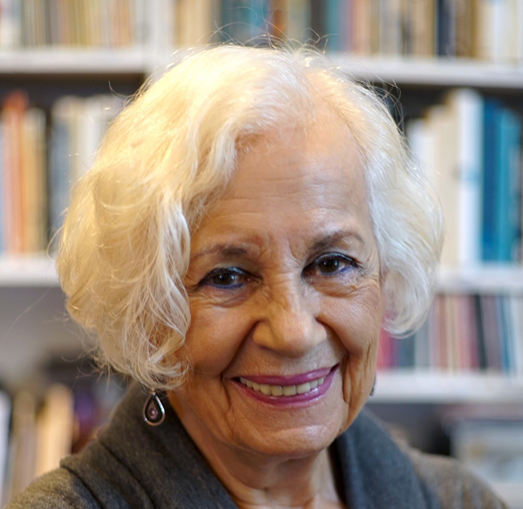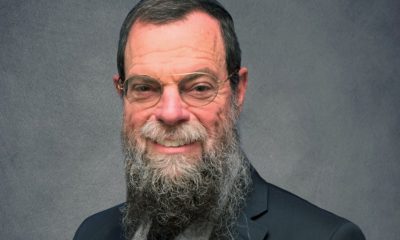
Parshot/Festivals

Wearing a mask to save a life
There are a number of reasons why we wear masks and fancy dress on Purim, one of which is to hide our identity, much like Esther and Mordechai, who weren’t upfront about who they were, hiding their identity to save the Jewish people.
Historically, they weren’t the only ones in who felt the need to hide their identity – especially as Jews – for their safety. There are many times that being Jewish has been life threatening. Here are a few vignettes of people who hid their Jewish identity to save themselves.
Ruth Posner
Ruth Posner became a well-known actress, dancer and choreographer as adult, but as a Jewish child during the World War ll, she survived by hiding her identity, pretending to be a Polish girl named Irena Slabowska.
When Posner told her aunt she intended to become an actress, the reply was, “Don’t be silly. You did your best acting when you were 12. During the war, you acted better than Sarah Bernhardt.”
She and her parents were sent to the Warsaw Ghetto. In 1942, Posner’s father arranged for his nine-year-old daughter and her aunt to go to work at a Jewish-owned leather factory outside the ghetto walls.
Once a week, the factory workers were taken to wash at a bathhouse outside the Jewish area. It was then that Posner and her aunt made a run for it and escaped. “We knew that if we were noticed, we would be shot. If we stayed, we knew we would die anyway,” said Posner.
Posner survived the remainder of the war by pretending to be Slabowska. Her Polish was pure and unaccented, as her family didn’t speak Yiddish at home.
Starting in the 1990s, she pursued acting, starring in several plays about the Holocaust, and went on to work with the Royal Shakespeare Company and do television and film.
Edith Hahn Beer
Edith Hahn Beer, born in 1914, became a judge at the Brandenburg district court, but survived the war by assuming the identity of a Christian friend of hers and taking on the persona of a poorly educated nurse.
Initially, Beer spent a few months of World War II never staying in the same place for more than one night to ensure she wouldn’t get caught.
Then, with duplicate copies of her friend’s identity papers, Beer went to Munich. There, she assumed the identity of Grete. She married and had a child with Werner Vetter, a young Nazi officer. She became the model Aryan housewife, never speaking out or attracting attention to herself.
During the war as a Nazi officer, Vetter was captured by the Russians and imprisoned in a Siberian labour camp in March 1945.
Once the war ended, the Soviet Military Administration in Germany had a dearth of trained lawyers, so it installed Beer as a judge at the Brandenburg district court. She successfully pleaded with the Soviet occupation authorities to free Vetter, but their marriage ended shortly afterwards. She remarried and later made aliya.
Roman Polanski
Multi-award-winning, French-born Polish actor, producer, screenwriter and film director Roman Polanski shares something with the protagonist of his 2005 film, Oliver Twist. Like Twist, he knows what it’s like “to walk for kilometres without socks in boots with bloody feet”.
Whereas Twist was escaping the Sowerberry’s house, Polanski did so to escape Poland’s Krakow ghetto during World War II.
It was in 1943 that the 10-year-old Polanski fled the Krakow ghetto thanks to his father smuggling him out through barbed wire. Stefania and Jan Buchala, devout Catholic peasants with three small children in the village of Wysoka, eventually took him in until the end of the war.
Before that, Polanski meandered around the Polish countryside, hopping from orphanage to orphanage, living with different families, and frequently sneaking into cinemas. All the while, he pretended to be Roman Catholic.
Polanski attended church, learned to recite Catholic prayers by heart and behaved outwardly as a Roman Catholic, although he was never baptised.
Ida Krayz
“My bedding was the field and the forest,” said Ida Krayz. “My sustenance consisted of sorrow and lice.”
Krayz survived World War ll to save many young lives as a director of an orphanage in Kyiv. She became a Ukrainian partisan, using a false identity.
She roamed across villages and towns under her assumed persona, in constant danger of being found out and handed over to the Nazis. Once, she posed as a doctor, another time as a seamstress.
On one occasion, she was captured by the Nazis and sent to a prisoner-of-war camp. There, she took on the name of Lidia Wladimirowna Tyszczenko to hide her Jewish identity.
Assisted by Russian partisans, Krayz managed to escape from the camp.
Krayz continued her meanderings, calmed by her feigned credentials and the cross she sported. She also memorised Christian prayers. “I did everything I could so they wouldn’t suspect me of being Jewish, but psychologically, I was depressed,” she said.
Antonio Fernandez Carvajal
Born in about 1596, Carvajal, dubbed “the first English Jew” by some, was a Portuguese merchant in London.
Having been baptised as a child in Portugal, where practising Judaism was a crime, he and his wife conformed to Roman Catholic practice while secretly observing Jewish rites in their home.
Outwardly a Roman Catholic, Carvajal played a leading role in the secret Jewish community, which met at the clandestine synagogue he opened in London.
Benjamin Melendez
Born in 1952, Melendez was a Nuyorican activist, musician and gang leader.
He and his family were Marranos (Sephardic crypto-Jews), practising their religion in secret while being part of a Hispanic community.
On Fridays, Melendez’s father drew the living room shades before reading to his children from the Torah, wrapping himself in a white sheet, and praying silently. Melendez’s mother secluded herself in the bedroom to light Sabbath candles.










